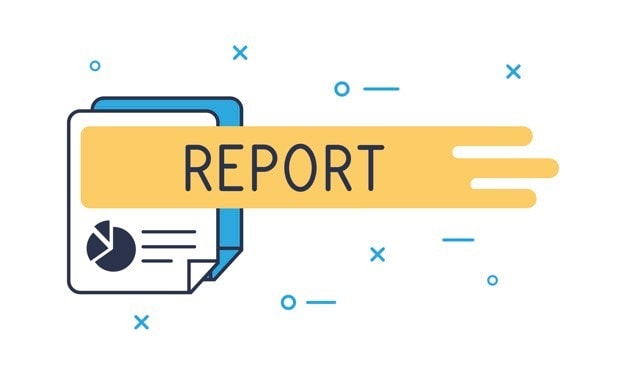Most of us dream of having people working for us and giving orders to them and controlling their work. But when it happens, then we realise that it is not as exciting as we hoped it to be, when you reach a respectable position in your job and have a team of employees working for you.
At that point, you might think that you have attained your goal, and you can chill by leaving your work to those who are working for you. But if you feel like this, then let me tell you, my friend, that you are wrong. When you reach a top position and get a team of employees working for you, then your work responsibilities only increases.
Now you are not only responsible for your career path and job responsibilities, but you are also responsible for propelling the careers of employees who are working for you. These employees will directly report to you, and you are needed to manage their work, assigning work to them, and also check their performance at work. Moreover, many times, you will be required to train and counsel them to keep them motivated.
Therefore, you must learn what a direct report is and what responsibilities you will get along with getting a direct report.
Read this article to learn about direct reports.
Table of Contents
Definition
A direct report can be defined as an employee who works directly below another person in an organization. A person who has direct reports is responsible for assigning work to them as well as their performance at work.
What is Direct Reports?
A person working at a respectable high position gets several employees to work for them, and he is responsible for assigning work to them and keep track of their work performance. An employee that directly below another employee in an organization is called direct report.
A direct report can also be referred to as supervisee or subordinate. But a direct report is different from any other subordinate working at a lower position than your position because a direct report works directly below the person who manages his work.
Along with other job responsibilities, it is also one of your primary job responsibility to assign work to your direct report, manage and measure their performance at those tasks, and provide support to them when they need.
There is a significant difference between a direct report and an indirect report. A direct report will work directly below you and will take orders from you and report to you directly. On the other hand, an indirect report is also your subordinate but works directly below your direct reports and take orders from them, or an indirect report to you can be a direct report of another person working for some other person at the same level as yours in the organization.
To understand the concept of the direct report, remember that you are the boss of your direct report. You give orders to them, provide instruction to them for how to do a particular task, analyse their work performance, and be their guide from time to time.
Who usually has reports?
Not every organisation has direct reports. Organisation of any size, whether small or big, can have direct employees only if it fits into an organisational structure. Especially organisations where there are numbers of departments and a large number of employees work under one roof. In such organisations, it becomes difficult for one person to manage the work of all employees; therefore, each employee at a higher position is given the responsibility of managing the employees who work immediately below them.
In this way, it becomes easy to manage all employees and keep a check on their work performance.
How Organisations Managers Utilize
Direct reports fit well in organisations that follow a sort of hierarchy in the organisation. It does not depend on the size of the organisation but relies on the structure of the organisation. If an organisation follows a traditional structure. In such an organisation, the job responsibilities are divided among different employees in the form of various departments, and each employee is given responsibility to overlook the work of that department
In this way, a line of authority is created in the organisation, and each employee will have different work responsibilities and powers based on their position in the line of authority in the organisation.
Let us take the example of a retail organisation, in a retail organisation, the line of authority will be as follows:
- The owner
- The store manager
- Salesperson
The owner of the retail business holds the highest role in the retail business, and store managers working in different stores branches of the retail business are direct reports to him. In contrast, the salespersons working in a store are a direct report to the store manager of that retail store. That means the store managers of all stores will report to the owner and take instruction from him and the salesperson of each store will report directly to the retail store manager and follows the instructions given by him.
This is an example of an organisation with a single hierarchy. There are several large organisations where there are several parallel lines of authority. In some organisations, there are several departments. The people working in every department will be the direct reports of the head of each department, whereas the head of the department will be the direct reports of the CEO of the company.
What type of organizations don’t use it
There are a few organisations that don’t use direct reports, and in the present times, the number of such organisations has been increasing. These organisations are referred to as flat organisations or horizontal organisations. These organisations are a far cry from traditional organisations.
These organisations are referred to as flat organisations because there are no job titles or managers in these organisations. All employees are treated equally. Because of this reason, these organisations are also called self-managed organisations because each employee of the organisation is responsible for the performance of his work.
The flat organisational structure works well for the organisations that require creativity to do their work. Take the example of companies that develop video games or computer games. In such organisations, each employee has the freedom to look into any project that is running in the organisations, and they also have the freedom to start their projects. Creativity blooms in such organisations. All information is openly available for all employees, and all have the same right to use the information for innovation.
Many companies are switching to flat organisational structure from traditional organisational structure because they believe that most of the time of employees is wasted in preparing reports and doing other paperwork, rather than using their working hours to do something creative that helps for the progress of the organisation.
Best Way to Managing
Managing direct report is not an easy task, and getting work done from them requires skills and patience. Many people are good at doing their job, but when it comes to managing other employees, they can’t do it efficiently because of the lack of experience or lack of knowledge of methods to manage direct report.
In this section, you will learn about what you should do to manage your direct report best.
1. Conduct regular business meetings
To establish a healthy work relationship with your report requires you to make your reports believe that how much you value their association with the project. The best way to do this is to conduct daily face-to-face meetings with them and keep them informed about the progress of the project.
A face-to-face meeting is quite effective than merely just communicating through emails. Your employees will connect with you more, and you can also analyse their mind status by interacting with them regularly and take necessary actions to make things correct.
Moreover, face-to-face meeting gives the impression that you appreciate their participation in the project. By doing this, you keep everyone, whether they are your employees or clients on the same page about the progress of the project.
2. Learn more about it/h3>
The best way to make a report happy is by genuinely being interested in their desires and needs. You can make use of the face-to-face meetings to not to ask them about the progress at work but can also ask them questions such as what they want out of their career.
This will not only make your direct report happy and make them feel that you care about them. But it will also provide you with awareness about what your direct report are expecting and what they want to do in their career.
Based on this information, create opportunities for them so that along with doing their work, they can also progress in the direction of their dream career. In this way, you will motivate them to do 100% while they are working for you.
3. Have open communication with manager and executives
Open communication improves the quality of every relationship; it is a relationship with your spouse or with your direct report. There must be several things that bother your direct report, or they must have issues and concerns that they want to talk about. Being their boss, it is your responsibility to listen to what they have to say and provide appropriate solutions to them.
However, it is not possible for you to provide a solution to every problem and nobody expects that from you. Sometimes, just listening to the issues of your reports is enough, as they will think that you care about their feelings. It will help in boosting the morale of your direct report and make them excited to do their work.
4. Provide them best feedback:
People appreciate honest feedback, and the same applies to your direct report. Providing honest feedback make your direct report to realise just how much their contribution to work is crucial for you and in this way, they will feel motivated and make efforts to work on the things they lack.
Moreover, getting honest feedback will improve their morale, and they will feel that they are being treated fairly. As a result of this, the rate of turnover will decrease in your organisation as your employees will not have any reason to leave their job.
5. Give a clear outline of what you want from them:
If you want your direct report to perform efficiently and perform as per your expectations, then it is your responsibility to provide them with a clear outline of what you expect from them. For example, it is quite natural for you to work for a client who gives a clear overview of what they expect you to do rather than a client who himself is confused about what he wants.
Your direct report expects a clear outline as you expect from your client. Therefore, provide them with clear direction for what you expect from them to do in a week or what or expect from them in the next meeting.
Don’t expect your direct report to know what you want them to do. Instead, be clear and provide clear guidelines about work to be done in every face to face meeting.
6. Keeping it informative :
The most common mistake that most managers make is that they don’t share all the information about the projects that they are working with their direct report. Being a manager, you are entitled to know about the information that might not be related to the current project that you are working on.
For example, your company is planning on downsizing the organization. If you are aware of such information, then it is your responsibility to share such information with your employees.
However, that does not mean you are required to share every minute detail with your employees. Learn to filter out the information that is not relevant to your employees and share only the information that might affect them or their jobs.
Role
Having people working does not mean that you can relax, but it means that your responsibilities will increase with the increase in the direct report. Now you are not only required to care about your work performance but also about the work performance of your direct report.
In this section, you will learn about the responsibilities that come on your shoulder when you have direct report.
1. Supervising tasks
The first responsibility that comes on you as soon as you have direct report is the supervision. You are required to supervise the work that your direct report do because now you are not only responsible for the work that you produce but also responsible for the work that your direct reports provider.
The poor performance of your direct reports will have a direct reflection on you. You will not just prepare your to-do-list but will also assign work to your employees that you want them to perform in a day.
Supervising does not mean criticizing your employees, but it means providing support to them whenever they need it.
2. Mentoring
Having direct reports make you a mentor. If you want to succeed in your career, then you need to make sure that your employees are also flourishing in the respective jobs that they have been assigned.
To make your direct reports perform efficiently, you are required to provide guidance to them and give them advice when they need so that they can perform well.
3. Reviews and evaluations
Having direct reports means you are responsible for reviewing and evaluating their work. You are also required to report your seniors about the performance of your direct reports, and you might need to write a review and evaluation report explaining the work performance of your direct reports.
Thank you for reading our article about benefits of business reports.
Liked this post? Check out the complete series on Human resources



